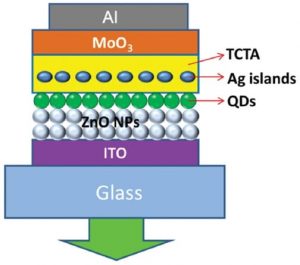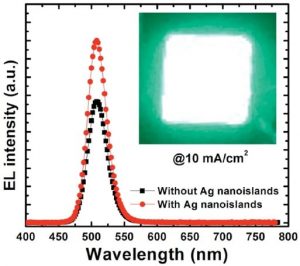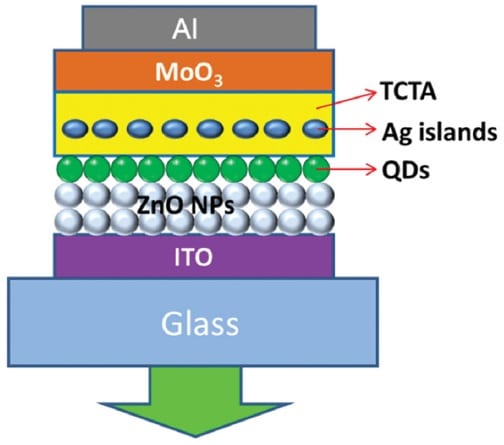 Light-emitting diodes (LEDs) have proven themselves commercially as highly efficient light sources. Their large-scale adoption has called for more cost-effective fabrication techniques with less toxic and easily sourced materials, as well as higher brightness and a greater range of available colours.
Light-emitting diodes (LEDs) have proven themselves commercially as highly efficient light sources. Their large-scale adoption has called for more cost-effective fabrication techniques with less toxic and easily sourced materials, as well as higher brightness and a greater range of available colours.
A favourite material for all things bright and colourful is semiconductor quantum dots, whose narrow emission linewidth and bright, readily tunable colours are ideal for such an application. Research into the production of quantum dot light-emitting diodes (QLEDs) has seen them approach the performance of more traditional organic material-based LEDs, and emerge as candidates for single-material, coloured light sources.
However, the efficiency of QLED devices needs improving before their commercialization and widespread become a reality.
 Groups working in Singapore and Turkey, including researchers at the Luminous! Centre of Excellence for Semiconductor Lighting and Displays, have used plasmonics to enhance the external quantum efficiency of their QLED devices—a measure of how many charges are generated by the device given a certain input, in this case, how efficiently the device converts electricity to light—by a whopping 46%.
Groups working in Singapore and Turkey, including researchers at the Luminous! Centre of Excellence for Semiconductor Lighting and Displays, have used plasmonics to enhance the external quantum efficiency of their QLED devices—a measure of how many charges are generated by the device given a certain input, in this case, how efficiently the device converts electricity to light—by a whopping 46%.
They achieved this by engineering a thin layer of silver nanostructures into the hole transport layer of the device. The plasmonic coupling effect of these structures induces a near-field enhancement in the quantum dot layer, leading to enhanced radiative decay rates and therefore higher device efficiencies. The maximum EQE measured was 7.1%, which is the highest yet measured for this device.

















